See inside Marble House, a 50-room Gilded Age mansion that a Vanderbilt heir gifted to his wife for her birthday
Talia Lakritz

- Marble House was completed in 1892 as a summer home for William K. Vanderbilt and Alva Vanderbilt.
- Built with half a million cubic feet of marble, it features 50 rooms and spans 140,000 square feet.
Alva Vanderbilt's 39th birthday present from her husband was a 140,000-square-foot summer "cottage" on the shores of Newport, Rhode Island.
As heir to the Vanderbilt family fortune during the Gilded Age, William K. Vanderbilt spared no expense in building Marble House for his wife. It was designed by Richard Morris Hunt, the same architect who worked on The Breakers, another expansive Newport mansion. Construction cost around $11 million in 1892, or about $380 million in today's dollars. The home's 500,000 cubic feet of marble alone cost about $7 million, or around $241 million today.
The marriage didn't last, but Marble House remained in her possession after their divorce. In addition to throwing extravagant balls and dinner parties, Alva Vanderbilt also hosted women's suffrage rallies on the property and leveraged her wealth to champion the cause. She even wrote the libretto for an operetta about women's suffrage, which was performed at New York's Waldorf-Astoria Hotel in 1915.
In recent years, the HBO show "The Gilded Age" has used Marble House as a film set.
Take a look inside this historic Newport mansion.
Completed in 1892, Marble House is a 50-room, 140,000-square-foot summer home that belonged to William K. Vanderbilt and Alva Vanderbilt.
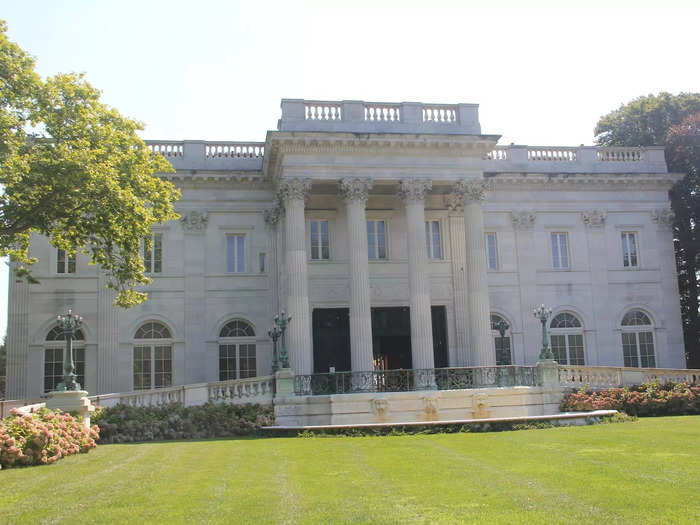
The Preservation Society of Newport Country acquired the home in 1963 and turned it into a museum open to the public. Self-guided tours cost $25 per adult ticket and can be purchased on the Preservation Society's official website.
William K. Vanderbilt gifted the home to Alva Vanderbilt for her 39th birthday.
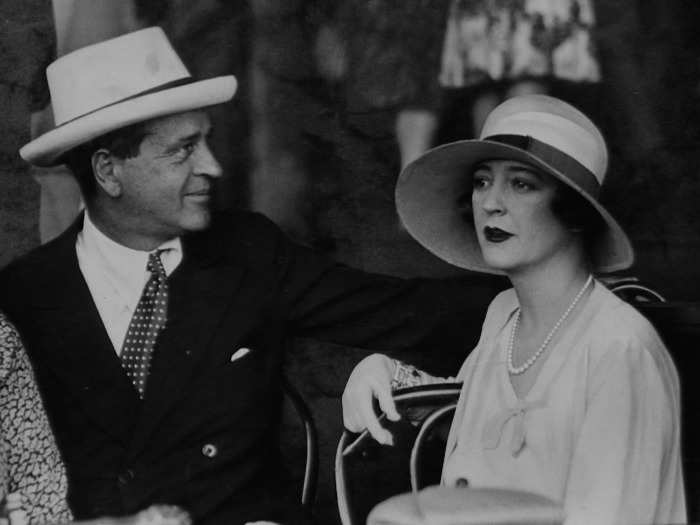
William K. Vanderbilt was Cornelius Vanderbilt's grandson and heir to the family's railroad and steamship fortune during the Gilded Age. Alva Vanderbilt was a popular hostess in Newport.
When Alva Vanderbilt divorced her husband in 1895, she survived the scandal and kept Marble House and custody of their three children, Consuelo, William Kissam Jr., and Harold Stirling. She then married one of her neighbors in Newport, a financier named Oliver H.P. Belmont, in 1896.
After Belmont died in 1908, she became a leader in the women's suffrage movement, funding the National American Woman Suffrage Association and serving as president of the National Woman's Party.
Marble House's foyer featured walls, ceilings, and a grand staircase made of solid Italian marble, which Alva Vanderbilt chose for its warm hue.
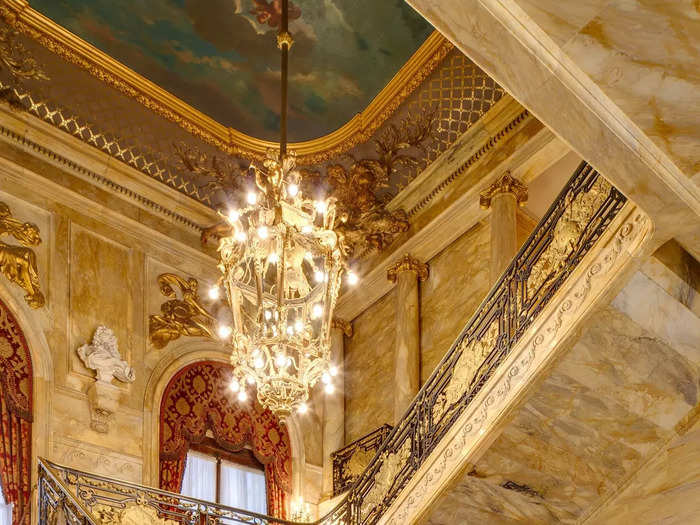
"It would have been impossible to have used a pure white marble for the interior without having a mausoleum effect too cold for living comfort and joy," Alva Vanderbilt wrote of Marble House. "The soft gold brown fading off into delicate cream catches the sunlight by day or electric sparkle at night with a warm living glow."
The marble entrance hall led out to a portico overlooking the ocean.
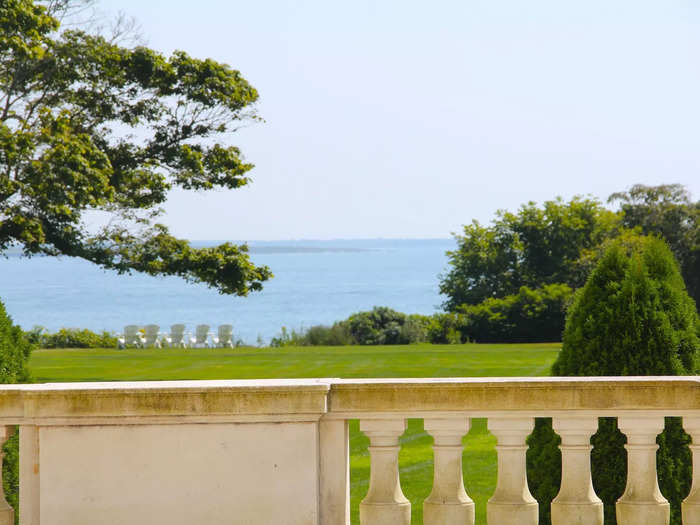
The French doors in the entryway stayed open during the summer to provide a cooling ocean breeze.
The Dining Room was modeled after the Salon of Hercules at the Palace of Versailles.
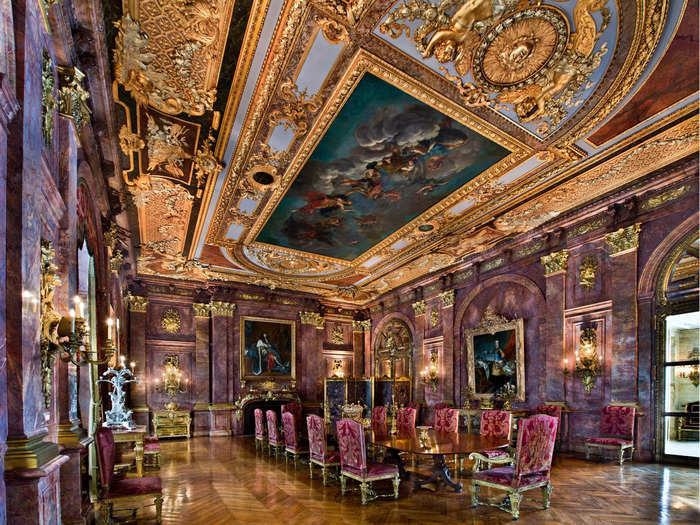
Alva Vanderbilt was born in Alabama and raised in France. Her French design sensibilities were evident throughout the house.
The purple marble used for the walls was imported from Algeria.
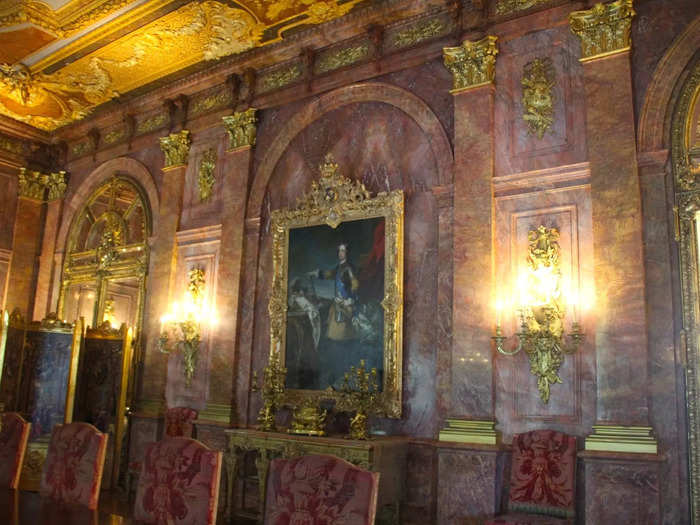
The walls were created from one solid slab of marble that was cut in half to create pieces with mirroring patterns, a technique called bookmatching.
Alva Vanderbilt commissioned dining-room chairs inspired by those used by King Louis XIV of France.
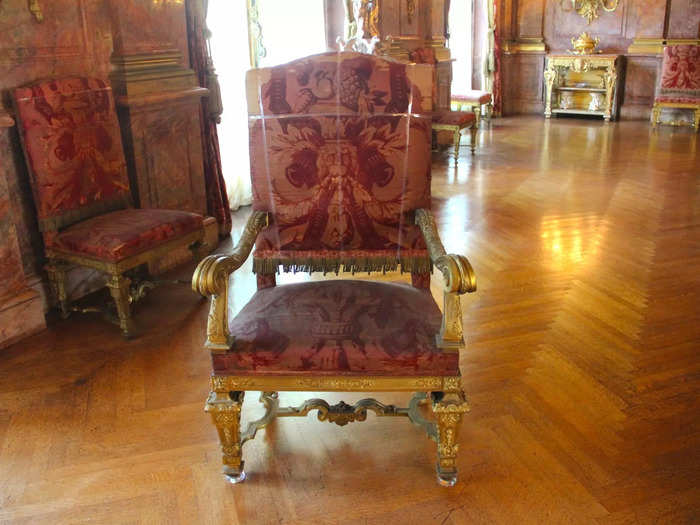
Crafted from bronze and covered in gold, the chairs weighed 75 pounds each and required the help of a footman to be seated in.
The Gothic Room displayed medieval and Renaissance art that Alva Vanderbilt acquired from Emile Gavet, a French art collector.
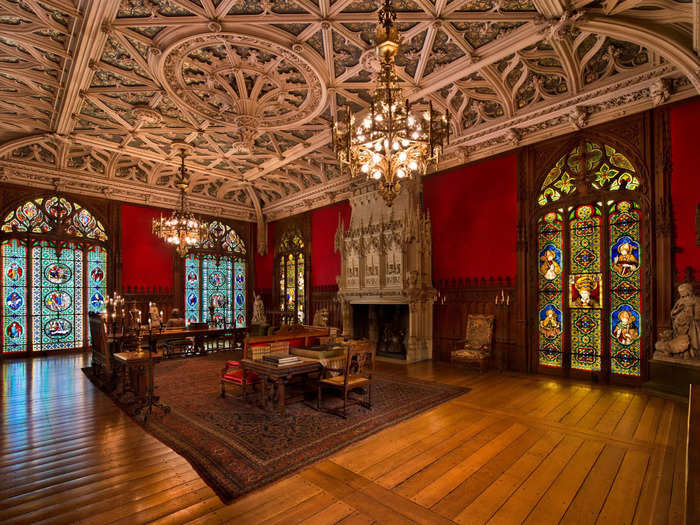
The ribbed ceiling, stone mantlepiece, and wood floors were all imported from Paris.
Alva Vanderbilt purchased the art collection "en bloc," or all together in a set.

Buying art collections "en bloc" was popular during the Gilded Age as a way to quickly acquire a status symbol instead of taking generations to build a collection.
The Morning Room also functioned as a library.
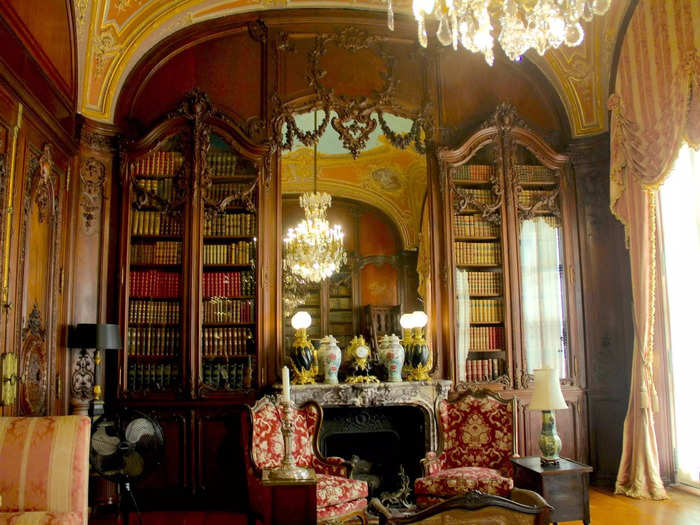
The wooden bookcases, built in Paris by Allard and Sons, held books on architecture and European history that were original to the Vanderbilt family's collection.
The Grand Salon was also called the Gold Room because of the 22-karat gold leaf covering every wall.
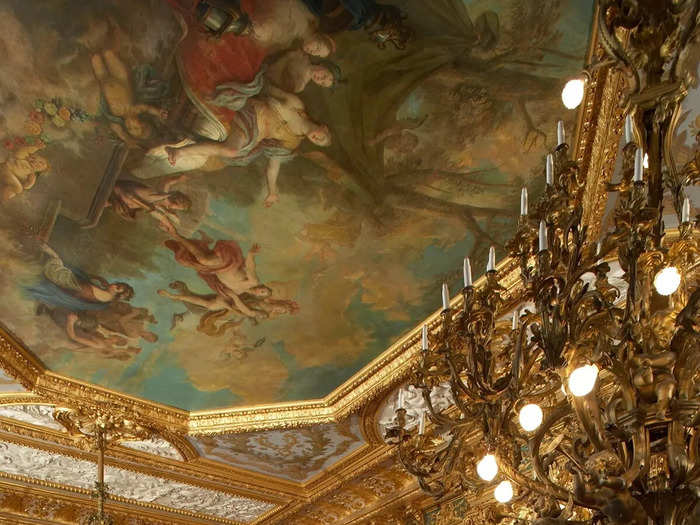
"This room is really the epitome of the Gilded Age," Caitlin Emery, the research and interpretation coordinator at the Preservation Society of Newport County, said on the audio tour. "It is coated in gold and you have to imagine guests coming in on a summer evening with the sun going down. And the light picking up on all these gilded surfaces. The feel and the essence of the room would have been absolutely remarkable."
The Vanderbilts used it as a ballroom.
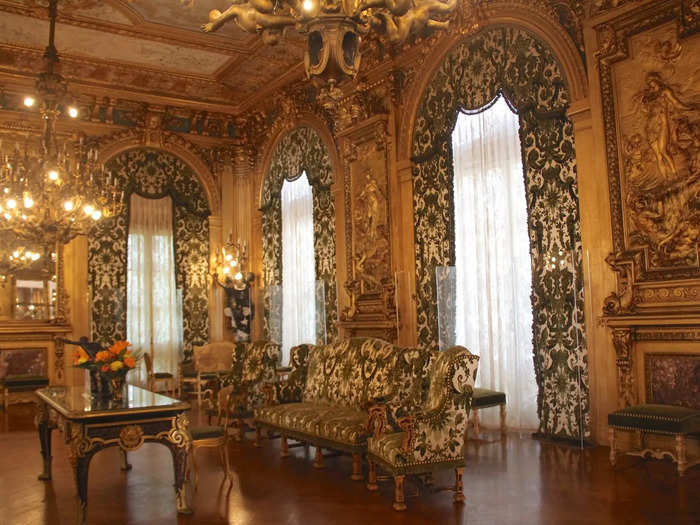
In 1895, the Vanderbilts hosted a ball to celebrate their daughter Consuelo Vanderbilt's engagement to Charles Spencer-Churchhill, the ninth Duke of Marlborough. The party featured 300 guests and lasted until 5 a.m.
Consuelo Vanderbilt was secretly engaged to another man and resisted the arrangement, but she wrote that her mother "would not hesitate to shoot" her lover if she tried to run away with him.
"Alva wanted to secure for her daughter the one thing that money couldn't buy — a title," Emery said in the audio tour.
Theirs was a loveless marriage. After 26 years, Alva Vanderbilt testified that she had forced her daughter to marry the duke, which allowed her to receive an annulment in 1921.
The tour continued up the grand staircase on the second floor.
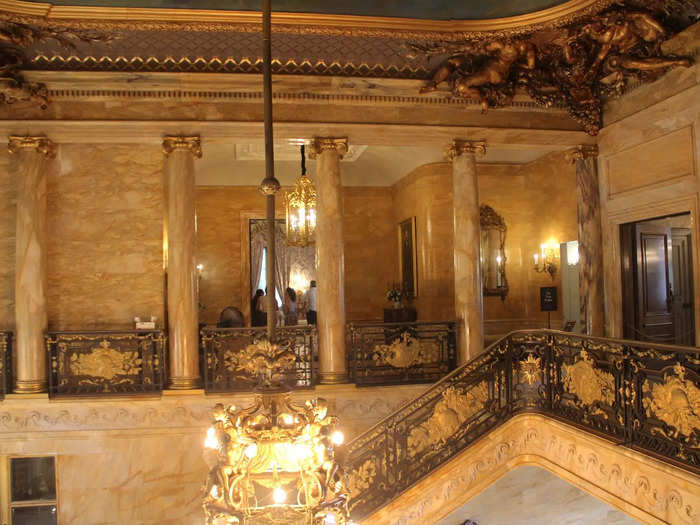
The mezzanine level featured two private studies, one for William K. Vanderbilt and one for Alva Vanderbilt.
Consuelo Vanderbilt's bedroom appeared as George Russell's room on the HBO show "The Gilded Age."
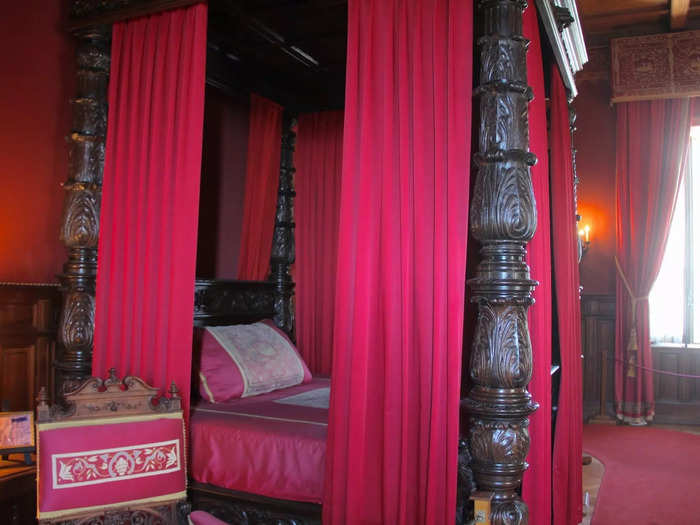
Consuelo Vanderbilt moved to Marble House when she was 15. She described her room as "austere," writing that her mother had picked out every piece of furniture and "forbidden the intrusion of my personal possessions," according to the audio tour.
A wooden spiral staircase outside Consuelo Vanderbilt's bedroom led to the service areas at Marble House.
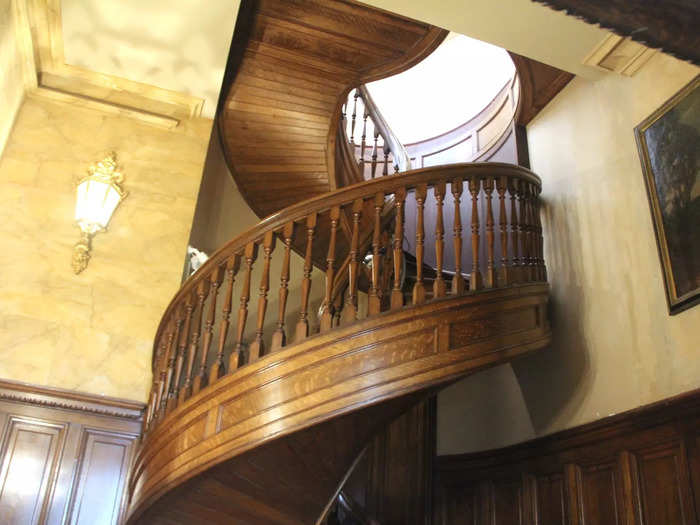
The Vanderbilts would never have used the servant staircase or gone into the service areas.
The Vanderbilts' youngest child, Harold Vanderbilt, was an award-winning sailor whose trophies were displayed in the Trophy Room.
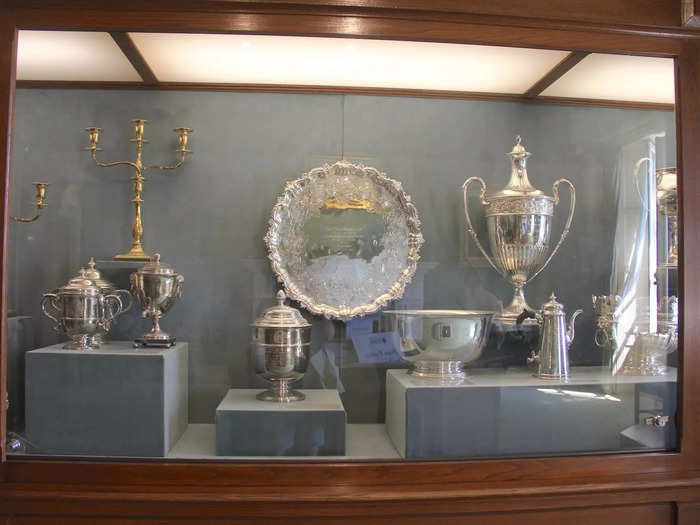
When the Vanderbilts lived at Marble House, the Trophy Room was a set of two connected dressing rooms for Alva Vanderbilt and Consuelo Vanderbilt. The Preservation Society turned it into a room for Harold Vanderbilt's yachting trophies.
Decorated in the Louis XIV style, Alva Vanderbilt's bedroom featured a throne-like bed and silk wall hangings.
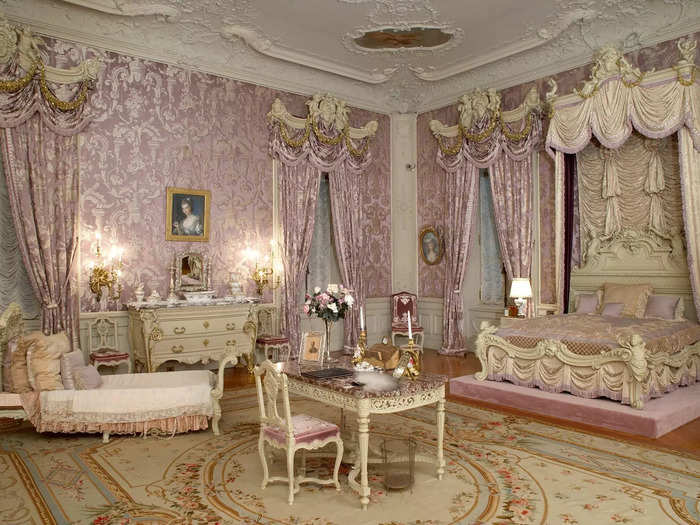
The carvings in the molding throughout the room featured nymphs and cherubs for a fairytale-like oasis.
The lilac silk wallpaper was an exact copy of the original.
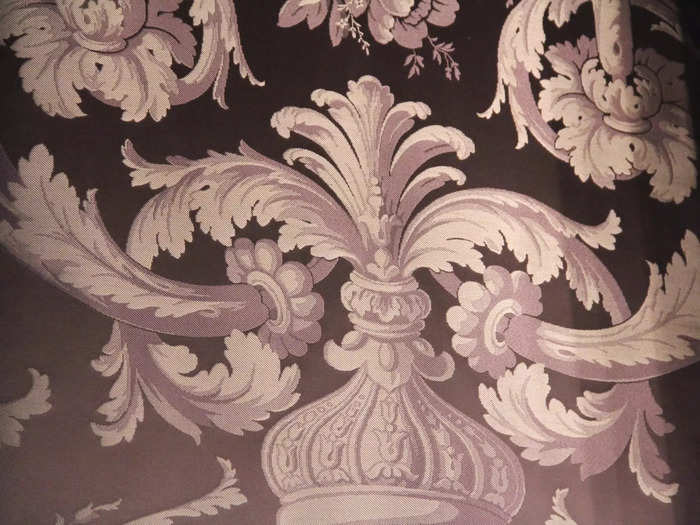
The factory that made Alva Vanderbilt's original wallpaper is still in business in Lyons, France, and it kept the Marble House orders in its archives. In 1990, the Preservation Society ordered the exact same wallpaper from the factory to replace the room's existing fabric, which had faded to gold, according to the audio tour.
William K. Vanderbilt's bedroom was much smaller than his wife's.
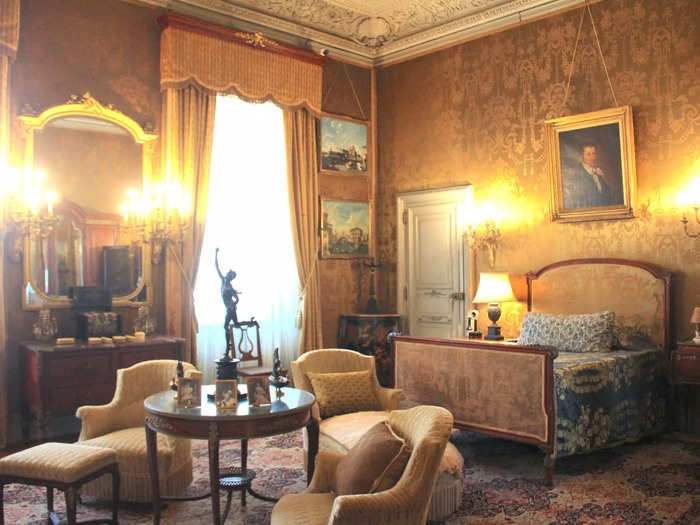
His bedroom was decorated in the French Neoclassical style. After he and Alva Vanderbilt divorced, William K. Vanderbilt moved to France with his second wife.
The guest bed still featured its original 18th-century lace canopy.
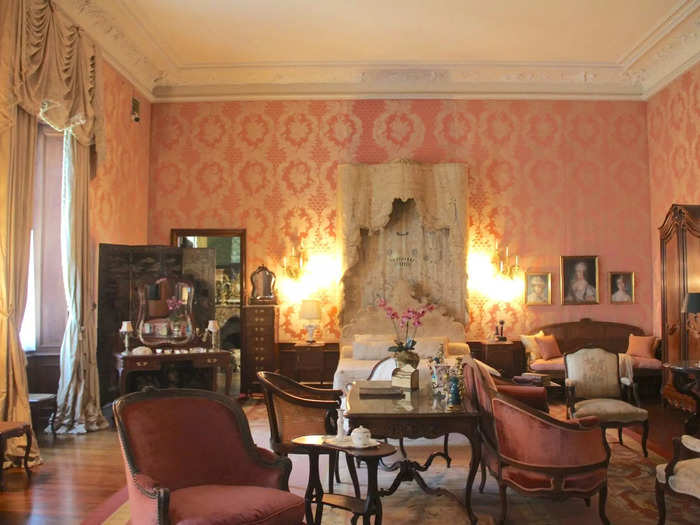
Marble House only had one guest bedroom because it was mainly built for family use.
The guest room was connected to a guest sitting room.
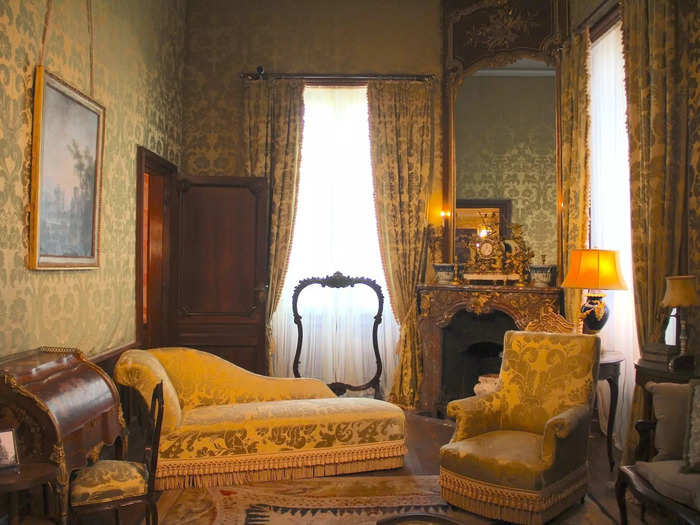
The guest sitting room was furnished with 18th-century French art and furniture produced by Allard and Sons.
Downstairs, Marble House would receive deliveries of flowers, wine, and food through the service entrance.
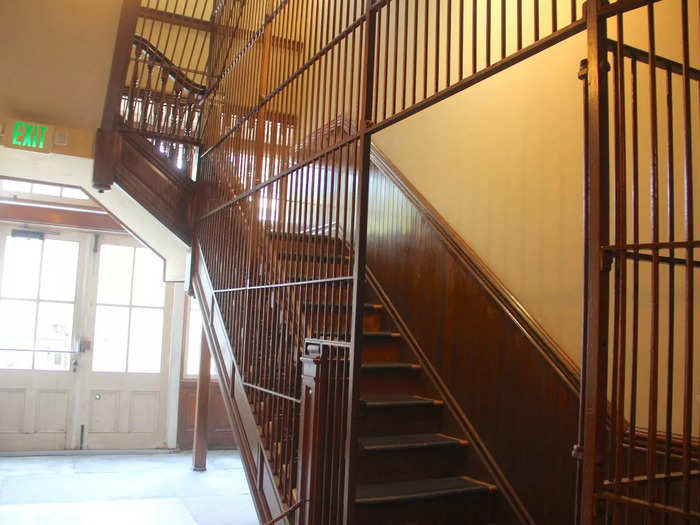
The stairs leading up to the rest of the house were locked to protect the Vanderbilts and their priceless possessions.
The Vanderbilts hired a French chef to staff the kitchen, which burned 30 tons of coal each summer.
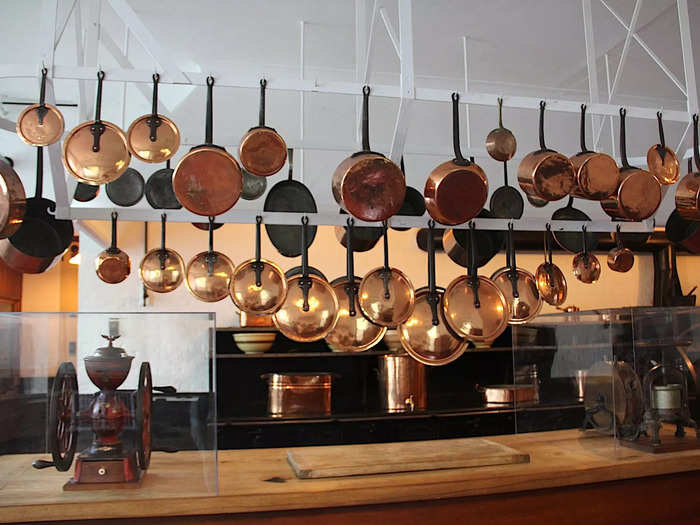
The Vanderbilts paid their French chef a salary of $10,000 per year, or around $374,000 in today's dollars.
Dishes were cleaned and stored in the scullery.
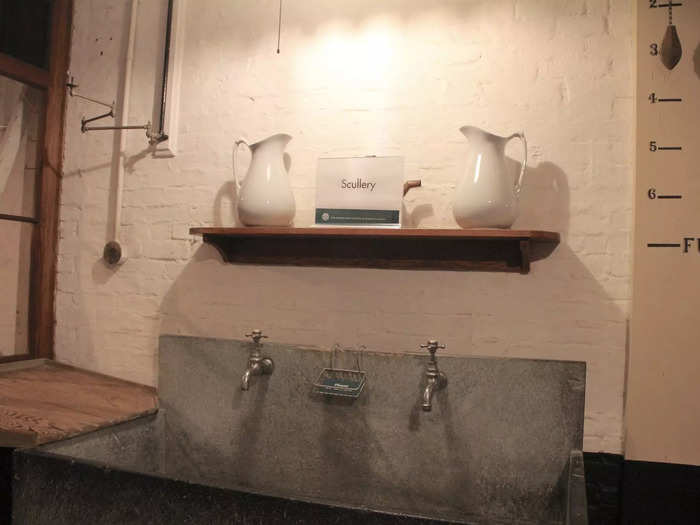
The sink was made of a soft mineral called soapstone to prevent the Vanderbilts' silver from being scratched or damaged during washing.
Alva Vanderbilt made a set of china emblazoned with "Votes for Women" which she used at women's suffrage rallies hosted at Marble House.

Alva Vanderbilt hosted women's suffrage conferences at Marble House in 1904 and 1914.
She is quoted as saying in her speeches: "Just pray to God. She will help you."
Replicas of the "Votes for Women" china were available for purchase in the Marble House gift shop.
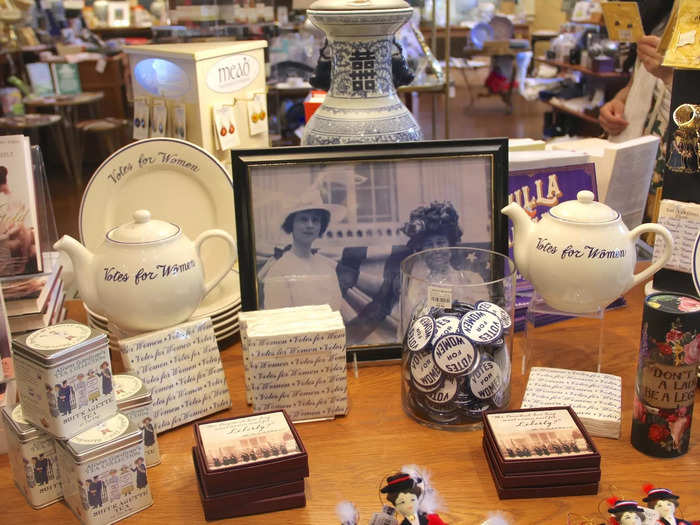
A "Votes for Women" teapot cost $28 at the gift shop. The large plates cost $14.95 and the smaller plates retailed for $12.95.
The grounds of Marble House featured beautiful views of the ocean.

Marble House is located along Newport's Cliff Walk, a scenic walking tour of the area's famous mansions.
The grounds also included a Chinese Tea House which Alva Vanderbilt commissioned after the death of her second husband.

Designed by Richard and Joseph Howland Hunt, the Chinese Tea House is now a café that offers refreshments and afternoon tea to Marble House visitors.
European copper beech trees dotted the property in another nod to the European palaces that inspired the design of Marble House.
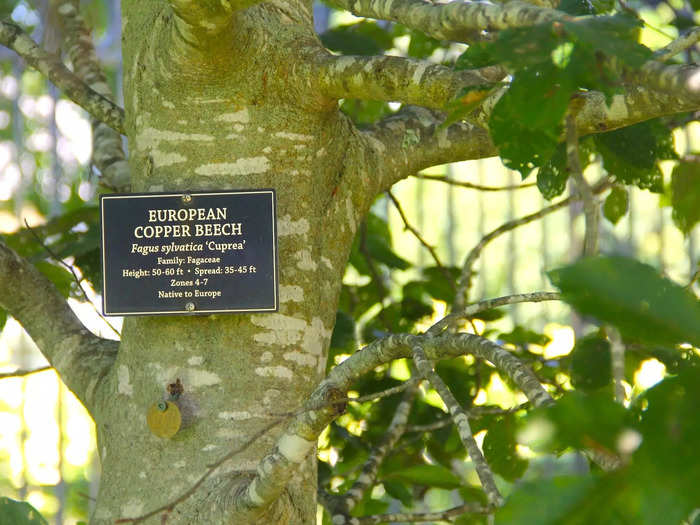
Imported from Europe, the trees can grow 35 to 45 feet wide.
Marble House is more than just an opulent Gilded Age mansion — it tells the story of Alva Vanderbilt's remarkable life.
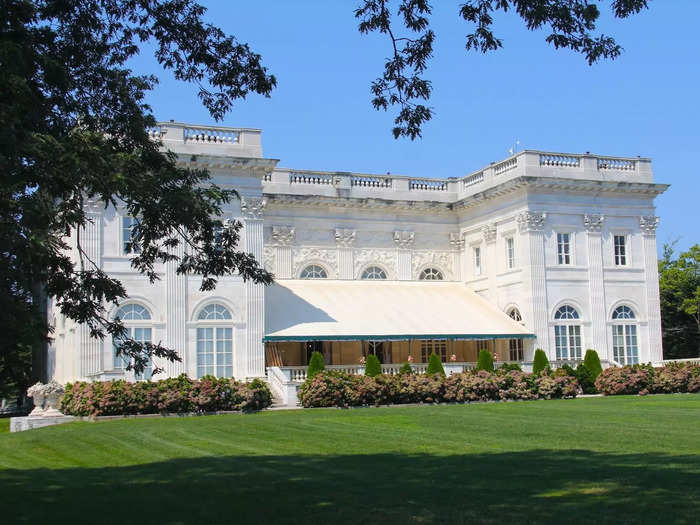
Built during a time of economic and technological advancement, Marble House symbolized the beginning of a new era where women could leave loveless marriages with their reputations intact and fight for the right to participate in America's democracy.
Popular Right Now
Advertisement